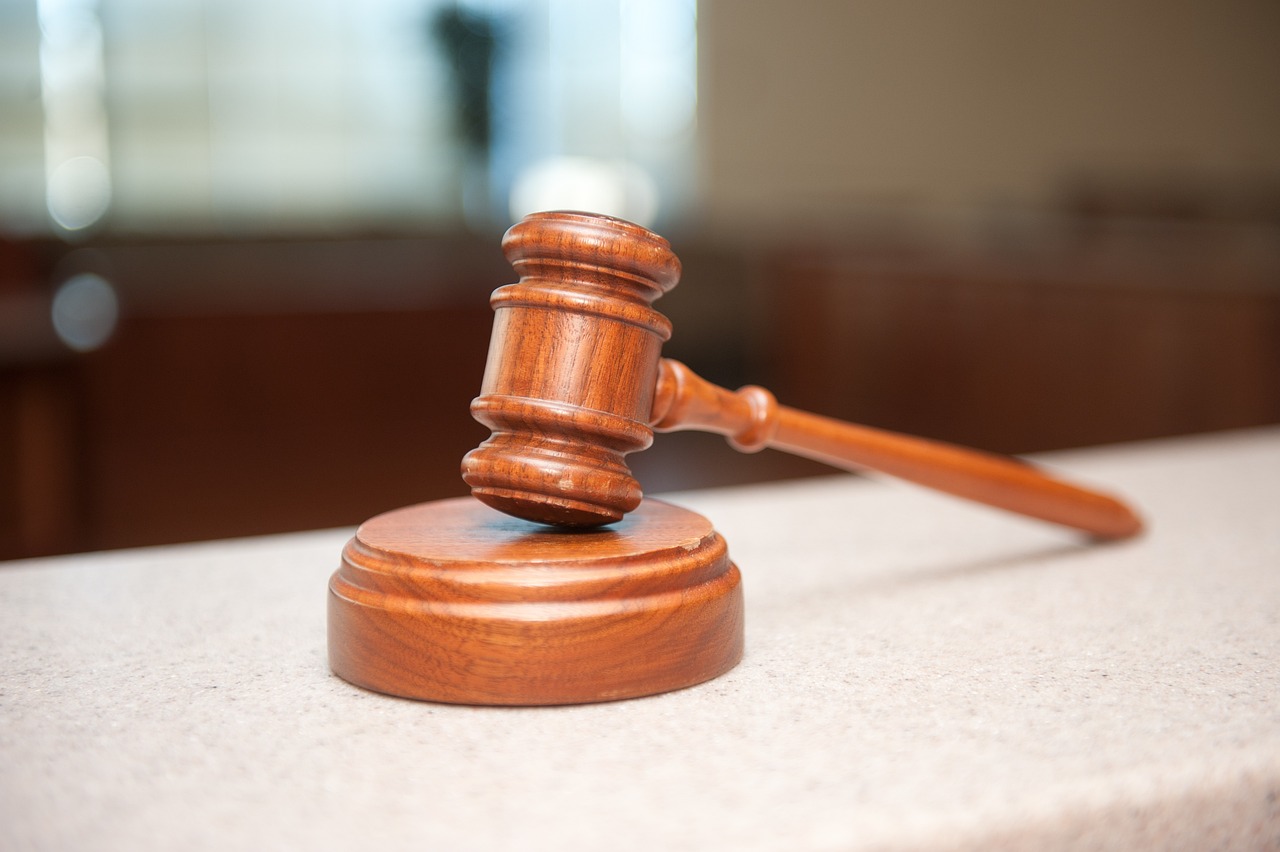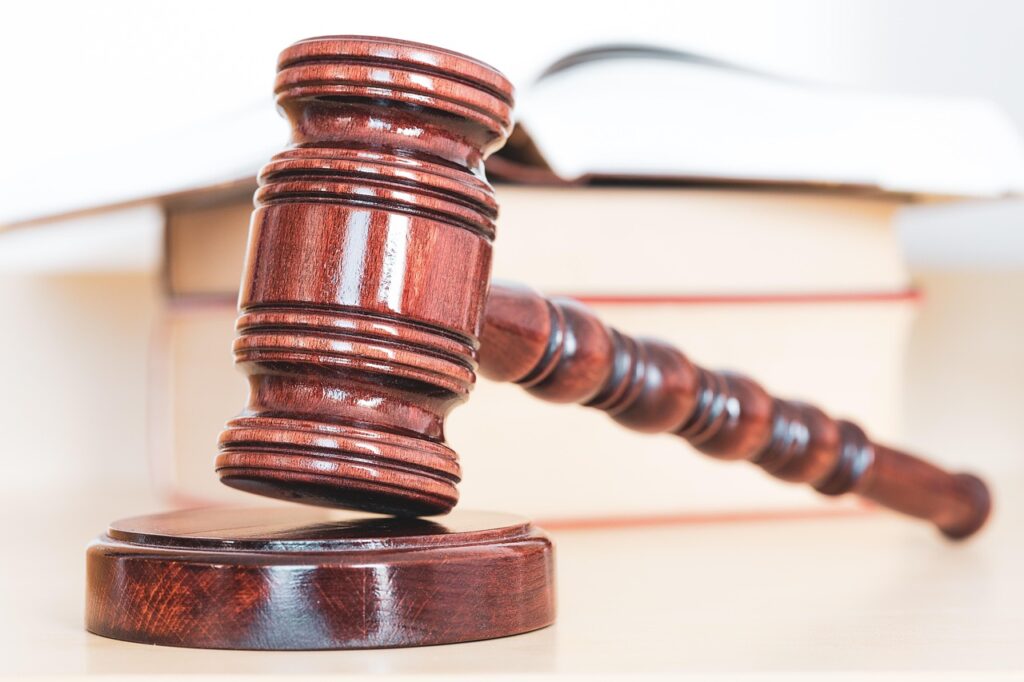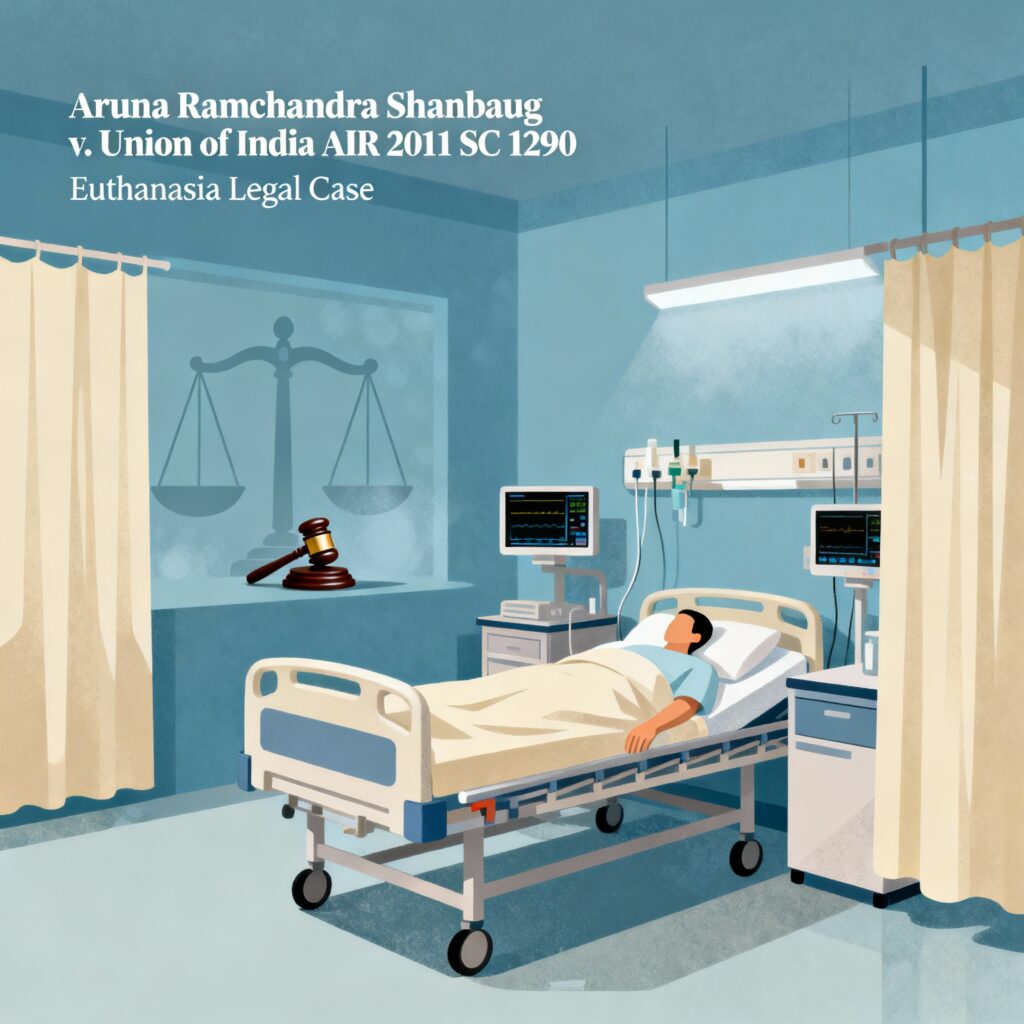Published On: 4th June, 2024

Authored By: Shivam Raj
THE ICFAI UNIVERSITY, HYDERABAD
INTRODUCTION
The realm of broadcasting in India stands at the crossroads of tradition and technological elaboration, recapitulating a fascinating trip shaped by literal mileposts, legislative trials, and the dynamic interplay of societal forces. From the establishment of All India Radio (AIR) in 1936, a pioneering adventure into public broadcasting, to the contemporary period marked by the confluence of traditional broadcasting and the rise of digital platforms, the line has been marked by a continual hunt for nonsupervisory fabrics that balance the cherished principles of freedom of expression with the need for responsible content dispersion. This composition embarks on a comprehensive disquisition of broadcasting in Indian media law, probing into the literal elaboration of regulations, the intricate web of nonsupervisory bodies, crucial legal fabrics, and the challenges and inventions that define contemporary broadcasting geography. As we navigate through this intricate shade, we unravel the layers of broadcasting’s history, present, and the promising possibilities that lie ahead in the ever-evolving geography of Indian media law.
Historical Evolution of Broadcasting Regulations in India: A Dynamic Odyssey
The literal elaboration of broadcasting regulations in India unveils a dynamic and multifaceted trip shaped by significant sociopolitical changes, technological advancements, and the hunt for a nonsupervisory equilibrium that balances freedom of expression with responsible content dispersion. This narrative commences with the trailblazing establishment of All India Radio (AIR) in 1936, a pioneering adventure that deposited India among the early adopters of public broadcasting. Post-independence, the geography of broadcasting witnessed the emergence of Doordarshan in 1959, marking India’s entry into televised media. still, it was the liberalization and globalization programs of the 1990s that steered in a new period, transubstantiating the assiduity from a controlled terrain to a liberalized, different, and encyclopedically connected geography. The Cable Television Networks (Regulation) Act of 1995 surfaced as a corner legislation, responding to the burgeoning string of TV assiduity’s growth. This legislation set the stage for a structured approach to licensing, content norms, and mechanisms to address grievances. It conceded the eventuality of TV as an important medium while assessing reasonable restrictions to ensure responsible content dispersion.
Regulatory bodies played a vital part in shaping the broadcasting geography. The Ministry of Information and Broadcasting (MIB) became the center for policy expression, working alongside bodies like Prasar Bharati, the Telecom Regulatory Authority of India (TRAI), the News Broadcasting Norms Authority (NBSA), and the Broadcasting Content Complaints Council (BCCC). These nonsupervisory realities aimed to ensure fair play, ethical norms, and the protection of public interest. The liberalization period saw a swell in private players entering the broadcasting arena, both domestic and transnational. This diversification led to the emergence of a multitude of channels feeding varied interests, mirroring the evolving preferences of a sapient followership. As the digital revolution unfolded, broadcasting faced a paradigm shift with the arrival of Over-the-Top (OTT) services, streaming platforms, and online content delivery. This metamorphosis urged a reassessment of being fabrics, driving conversations on the need for streamlined regulations able to address the complications of the digital age.
Landmark judicial pronouncements further shaped the legal geography. Cases similar to the Union of India. Cricket Association of Bengal (1995) and Secretary, Ministry of I&B vs. Cricket Association of Bengal (1995) affirmed the government’s authority to put restrictions on broadcasting rights in the interest of public order and precluding the abuse of airwaves. These cases underlined the delicate balance between individual freedoms and the larger public interest, establishing that airwaves are public property.
The 21st century witnessed the confluence of traditional broadcasting and digital platforms, egging a reevaluation of regulations. The analog-to-digital transition, the rise of Direct- to- Home (DTH) services, and the proliferation of community radio marked the dawn of inventions. The Community Radio Policy opened avenues for non-profit associations, educational institutions, and original bodies to operate community radio stations, amplifying original voices and fostering community engagement.
Regulatory Bodies in Broadcasting
Then, we claw into the crucial nonsupervisory bodies that have been necessary for guiding and governing the broadcasting sector in India.
- Ministry of Information and Broadcasting (MIB):
At the van of broadcasting regulation stands the Ministry of Information and Broadcasting (MIB), a central government department assigned with formulating and enforcing programs related to media and broadcasting. The MIB serves as the primary policy mastermind, overseeing the entire diapason of media conditioning, including print, electronic, and digital media. Its part extends to granting licenses, formulating guidelines, and icing that the broader nonsupervisory frame aligns with public objects while securing public interest
- Prasar Bharati:
Established by an Act of Parliament in 1997, Prasar Bharati is an independent body that oversees public broadcasting realities, most especially All India Radio (AIR) and Doordarshan. Prasar Bharati operates with the accreditation to ensure the autonomy and integrity of public broadcasting, seeking to give a platform that serves the different instructional and artistic requirements of the nation. It plays a pivotal part in maintaining editorial independence, fostering creativity, and clinging to the public service morality in broadcasting.
- Telecom Regulatory Authority of India (TRAI):
While TRAI is primarily honored for its part in regulating the telecommunications sector, its influence extends significantly into the broadcasting sphere. TRAI plays a critical part in formulating regulations related to tariffs, interconnections, and the quality of service in broadcasting. It addresses issues that impact both broadcasters and consumers, aiming to produce a fair and competitive terrain that ensures the interests of all stakeholders are taken into account.
- News Broadcasting Standards Authority (NBSA) and Broadcasting Content Complaints Council (BCCC):
Within the realm of tone- regulation, the News Broadcasting Norms Authority (NBSA) and the Broadcasting Content Complaints Council (BCCC) act as pivotal bodies in upholding ethical norms for news and general entertainment content, independently. NBSA, formed by the News Broadcasters Association, focuses on news content, icing delicacy, equity, and fairness. BCCC, established by the Indian Broadcasting Foundation, addresses complaints related to non-news content, emphasizing responsible and sensitive content creation.
These nonsupervisory bodies inclusively contribute to maintaining a delicate balance within the broadcasting sector, securing against malpractices, icing fair competition, and upholding the principles of public interest. Their places extend beyond bare oversight; they laboriously engage in formulating guidelines, resolving controversies, and conforming regulations to the evolving dynamics of the media geography. As the broadcasting sector continues to witness rapid-fire technological advancements and shifts in consumers the significance of these nonsupervisory bodies becomes indeed more pronounced. They face the ongoing challenge of striking a delicate equilibrium between fostering invention and ensuring that the assiduity operates within ethical and legal bounds. In this ever-evolving geography, these nonsupervisory guardians remain essential pillars, shaping the line of broadcasting in India and reflecting the nation’s commitment to a responsible, different, and responsible media terrain.
Key Broadcasting Regulations
In the intricate shade of India’s media geography, broadcasting regulations serve as the pivotal vestments that weave together the different fabric of content, technology, and public interest. These regulations, strictly drafted and meliorated over time, give the scaffolding upon which the dynamic and influential sector of broadcasting rests. Then, we claw into the crucial broadcasting regulations that govern the assiduity, shaping its silhouettes and icing a delicate balance between freedom of expression and responsible content dispersion.
- Cable Television Networks (Regulation) Act, 1995:
The Cable Television Networks (Regulation) Act of 1995 daises as a foundational pillar in India’s broadcasting regulations. legislated to address the burgeoning string TV assiduity, this legislation introduced a comprehensive frame governing licensing, content norms, and mechanisms to address grievances. It conceded the implicit impact of TV as an important medium while assessing reasonable restrictions to ensure responsible content dispersion. The Act remains necessary in overseeing string TV networks, contributing to a structured and regulated broadcasting terrain.
- Programme Code and Advertising Code:
Executed under the Cable Television Networks (Regulation) Act, the Programme Code and Advertising Code are pivotal guidelines that set norms for content on TV channels. The Programme Code delineates rules to ensure that broadcasts don’t offend morality, or decency, or incite violence. contemporaneously, the Advertising Code regulates the content of announcements, emphasizing the need for veracious and ethical advertising practices. Together, these canons form the ethical backbone of TV broadcasting, securing against the dispersion of unhappy or deceiving content.
- Direct-to-Home (DTH) Services Regulations:
With the rise of satellite broadcasting, direct-to-home (DTH) service regulations have become integral to governing the distribution of TV content. These regulations address licensing conditions, quality of service norms, and pricing mechanisms for DTH drivers. By furnishing a nonsupervisory frame for DTH services, these regulations ensure fair competition, consumer protection, and adherence to quality norms in satellite-grounded broadcasting.
- TRAI Tariff Order:
Issued by the Telecom Regulatory Authority of India (TRAI), the Tariff Order is a significant nonsupervisory instrument in the broadcasting sector. It lays down the frame for pricing and packaging of TV channels offered by broadcasters and DTH drivers. The order aims to promote translucency, ensure consumer choice, and help anti-competitive practices in the pricing of TV channels, contributing to a fair and competitive broadcasting request.
These crucial regulations inclusively produce a comprehensive legal frame that governs colorful aspects of broadcasting in India. They address licensing, content norms, consumer protection, and fair request practices, icing that the assiduity operates within ethical, legal, and competitive parameters.
Challenges in Broadcasting Regulation
- Technological Disruptions and Digital Transformation:
One of the foremost challenges in contemporary broadcasting regulation is posed by technological dislocations and the ongoing digital metamorphosis. The rise of Over-the-Top (OTT) platforms, streaming services, and on-demand content delivery has readdressed the geography, blurring traditional boundaries. Regulating content on these digital platforms, frequently transcending geographic authorities, presents a complex challenge for authorities. Striking a balance between easing invention and icing ethical norms becomes consummate in this period of rapid-fire technological change.
- Content Moderation and Censorship Concerns
One of the constant challenges in regulating content is maintaining the values of freedom of expression. It takes a sophisticated fashion to identify what’s discordant information, particularly in the news and entertainment sectors. The eventuality for overreach or suppression in content temperance raises enterprises about silencing different shoes and opposing unequivocal programs and procedures that support arbitrary decision- timber.
- Cross-Media Ownership and Pluralism:
The attention of media power across different platforms, known as cross-media power, raises enterprises about pluralism and diversity. Balancing the need for a competitive media geography with precluding monopolistic practices is a delicate task. Regulatory fabrics must evolve to address arising forms of media connection while conserving the sprightliness of different voices and perspectives
- Privacy and Data Protection:
As broadcasters and digital platforms collect vast quantities of stoner data for targeted content delivery and advertising, sequestration, and data protection have become critical enterprises. Regulations must grapple with securing stoner sequestration while allowing for the responsible use of data. Striking this balance is essential to cover individuals from unauthorized use of their particular information.
- Competition and Market Dynamics:
Icing fair competition in the broadcasting sector is a perpetual challenge. Regulations must guard against anti-competitive practices, icing a position playing field for new entrants and established players likewise. Dynamic request dynamics, driven by technological changes and consumer preferences, bear adaptive nonsupervisory fabrics that foster healthy competition.
- Globalization and Cross-Border Issues:
The global nature of media and broadcasting introduces challenges related to cross-border issues. Regulating content that transcends public boundaries requires transnational cooperation and adjustment of norms. Addressing issues similar to brand violation, detest speech, and artistic perceptivity on a global scale poses challenges for nonsupervisory bodies.
In navigating these challenges, nonsupervisory bodies play a vital part in shaping the line of the broadcasting sector. cooperative sweats involving assiduity stakeholders, policymakers, and the public are essential to develop adaptive nonsupervisory fabrics that foster invention, cover the public interest, and uphold the abecedarian principles of ethical broadcasting in a fleetly changing media geography.
Landmark Judgments Shaping Broadcasting Regulations:
The legal geography of broadcasting in India has been significantly shaped by corner judgments that have set pivotal precedents, impacting nonsupervisory fabrics and delineating the boundaries within which the media operates. These judicial pronouncements serve as guiding lights, offering perceptivity into the delicate balance between freedom of expression, ethical norms, and the public interest. Then, we claw more elaborately into some of the vital cases that have left an unforgettable mark on India’s broadcasting regulations.
- Union of India vs. Cricket Association of Bengal (1995):
This seminal case marked a watershed moment in affirming the government’s authority to put restrictions on broadcasting rights in the interest of public order. The Supreme Court emphasized that airwaves are public property, and the allocation of broadcasting rights can be subject to reasonable restrictions to help the abuse of this public resource. This case established a foundational principle, laying the root for posterior regulations aimed at securing public interest in broadcasting.
- Secretary, Ministry of I&B vs. Cricket Association of Bengal (1995):
A companion case to the Union of India vs. Cricket Association of Bengal, this judgment reiterated the government’s authority to put restrictions on broadcasting rights, particularly in situations where there’s an implicit trouble to public order. The Supreme Court emphasized that the government, as the custodian of airwaves, has a licit interest in icing that broadcasts don’t lead to complaints or disturbances.
- Common Cause vs. Union of India (2019):
In this recent case, the Supreme Court emphasized the need for translucency in the allocation of broadcasting licenses. The judgment underlined the significance of fairness, equity, and the forestallment of monopolies in the distribution of scarce coffers similar to broadcasting frequency. The Court’s directive aimed to ensure that the process of licensing adheres to principles of equivalency, precluding any overdue attention of power in the hands of many realities.
- Shreya Singhal vs. Union of India (2015):
While not directly related to broadcasting, this corner case dealt with Section 66A of the Information Technology Act, which had counteraccusations for online content, including broadcasting on digital platforms. The Supreme Court struck down Section 66A, emphasizing the need to cover freedom of speech and expression on digital platforms. This judgment had impacts on how content is regulated in the digital realm, impacting conversations at the crossroads of technology and media regulations.
- Bennett Coleman & Co. vs. Union of India (1972):
In this major case, the Supreme Court upheld the freedom of the press as an integral part of the right to freedom of speech and expression under Composition 19 (1) (a) of the Constitution. The judgment underlined the pivotal part of the media in easing public converse and holding those in power responsible. While not specifically related to broadcasting, the principles enunciated in this case have broader counteraccusations for media freedom, including broadcasting. These corner judgments inclusively form a legal frame that navigates the intricate dynamics of broadcasting in India. They support the principles of responsible broadcasting, translucency in licensing, and the delicate balance needed between freedom of expression and public order. As the media geography continues to evolve, these legal precedents give a compass, guiding controllers, broadcasters, and the public in understanding the silhouettes of admissible conduct and expression within the realm of broadcasting.
Innovations in Broadcasting:
Innovation in broadcasting has become the catalyst for a transformative shift in India’s media geography. The emergence of Over-the-Top (OTT) services has revolutionized content delivery, offering observers unknown inflexibility and diversity in their entertainment choices. The relinquishment of Digital Radio Mondiale (DRM) and the transition to Digital Terrestrial Television (DTT) show a commitment to enhancing audio and visual quality, furnishing cults with a superior broadcasting experience. Stoked reality (AR) and Virtual Reality (VR) technologies have readdressed liars, immersing observers in interactive and engaging content, especially in sports and entertainment. The rejuvenescence of podcasting, coupled with the growth of AI-driven happy recommendation systems, reflects an assiduity conforming to changing consumer preferences for substantiated and on-demand gests. These inventions, while perfecting the media geography, also pose challenges that bear nonsupervisory elaboration to ensure ethical norms, diversity, and the public interest are upheld in this dynamic and fleetly evolving broadcasting terrain.
Conclusion:
- In conclusion, India’s broadcasting regulations have experienced a transformative trip, told by corner judgments, technological advancements, and societal shifts. The delicate balance between freedom of expression, ethical norms, and public interest has been navigated through legal precedents that emphasize the significance of responsible broadcasting. As the sector grapples with challenges like technological dislocations, content temperance, and cross-media power, the nonsupervisory bodies must acclimatize to ensure a vibrant and different media geography. The elaboration of broadcasting regulations, as shaped by legal mileposts, reflects an ongoing commitment to fostering invention while securing the foundational principles of media ethics, translucency, and the dynamic interplay of rights and liabilities in the ever-evolving media sphere.





